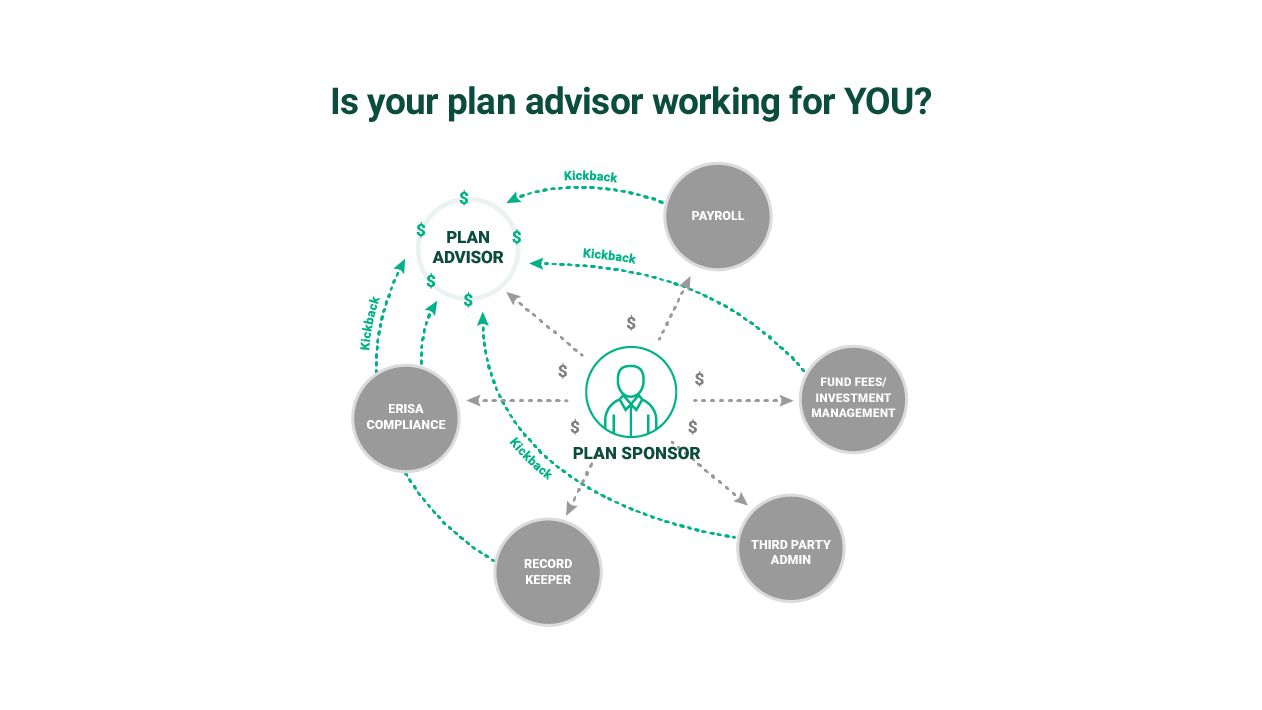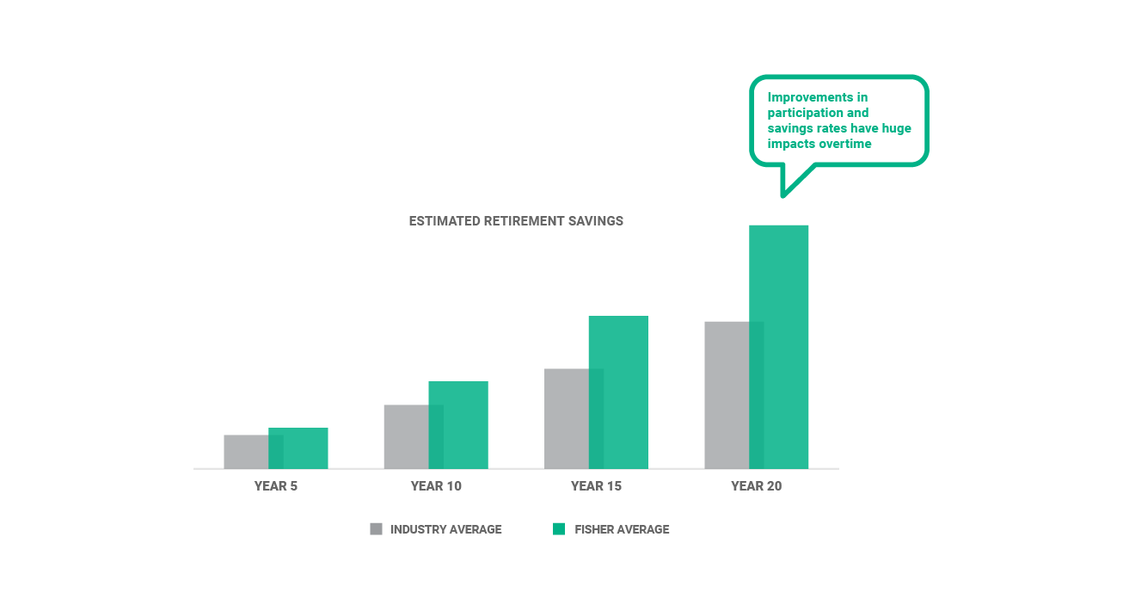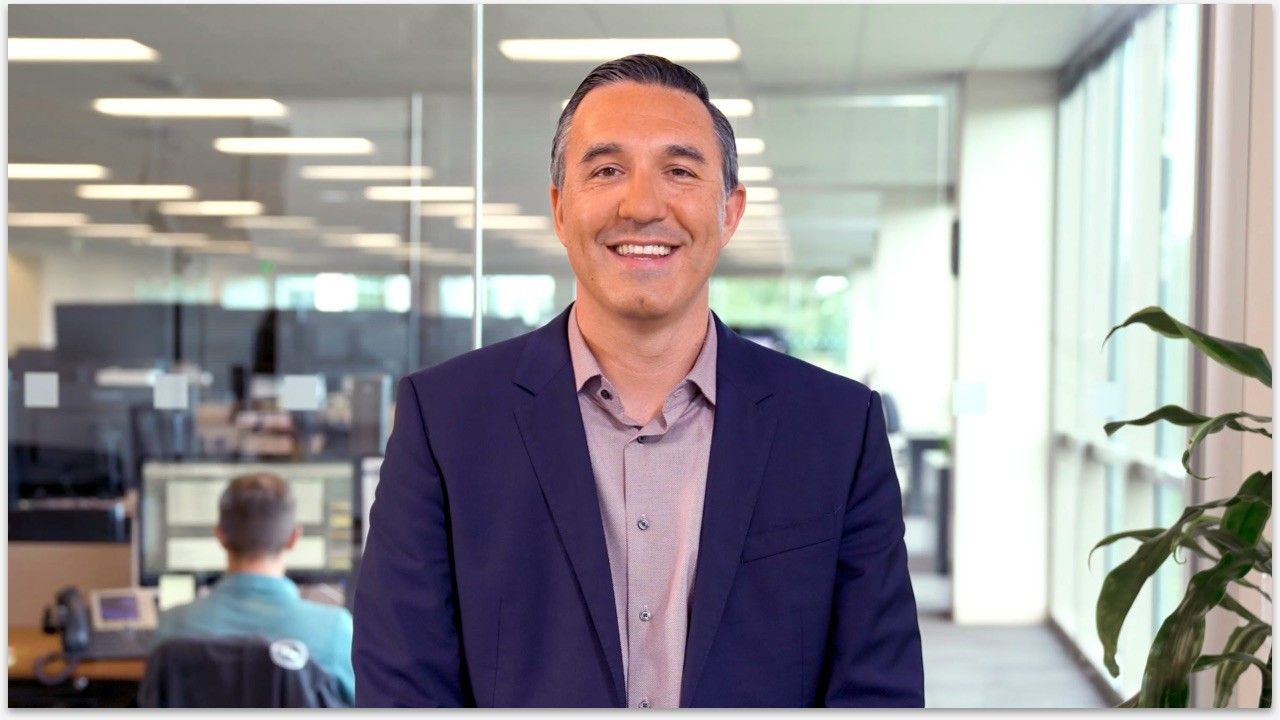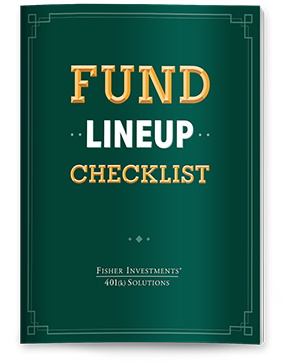Business 401(k) Services / 401(k) Plan Optimization
Setting Up Your Company’s 401(k) Investment Options
What Is Your Company’s 401(k) Fund Lineup?
Defined contribution plans, including 401(k) plans, now represent the main source of future retirement income for the majority of the workforce. Companies that provide a 401(k) realize this and prioritize the 401(k) fund lineup as being an important way to help their employees achieve their retirement goals.
Set The Goals For Your Company’s 401(k) Fund Lineup.
A fund lineup is the investment options your 401(k) plan offers employees. You want to offer a range of mutual funds or other investment vehicles that allow your employees to properly diversify their 401(k) portfolio, regardless of their age or investment goals. Your first step is to create an Investment Policy Statement that identifies your plan’s investment objectives, as well as what criteria you or your investment adviser will use when adding or removing funds from your company’s 401(k) fund lineup.
What Funds Should Be Included In Your Company's Fund Lineup?
At a minimum, when selecting options from the three main categories of investments—stocks, bonds, and cash—make sure that they complement one another. You can get exposure to all three categories of investments through funds. Don’t limit yourself to domestic options. The U.S. only accounts for about half the value of the world stock market, so expand your horizons with some international funds. A good fund mix includes U.S. and international investments. Also, for employees that are automatically enrolled but do not act to select their investments, you'll need to include a QDIA (Qualified Default Investment Alternative).
A QDIA allows you to avoid liability for the investments. Although there are few types of QDIAs, you can look for one that creates an investment model based on a participant’s age and becomes less risky and volatile as they age. What this means is that based on the age of the employee, the stock and bond mix changes. Therefore, if a person starts investing in their 20s, the fund starts out with a higher concentration of stocks compared to bonds, and the concentration shifts towards bonds as they age.
Consider retirement or institutional share classes, or proprietary funds that are designed to be low-cost. You’ll want to check and see if the funds’ holdings aren’t overlapping too much with other funds you’re considering.
If there is a lot of overlap, then your employees won’t be able to diversify as much. An easy way to do that: if you’re selecting index based funds, look at the benchmarks. If they’re the same, then you’ll most likely have overlap.
How Many Funds Are Too Many?
While many investors think diversification requires lots of choices, research shows that as long as you keep the above principles in mind, you can minimize risk and properly diversify with relatively few funds. The number of funds you offer in your 401(k) plan can quickly get complex, maybe even too complex, for the average investor. Remember, the more funds you offer, the higher the likelihood employees will become overwhelmed and not make a choice at all—or make the wrong choice.
How Often Should Funds Be Updated In A Fund Lineup?
A fund may have seemed like the right one based on its track record when it was chosen. But because performance, strategies, mangers and fees change regularly, the best fund today may not be the best fund tomorrow, and the numbers bear this out. At least annually, you and your adviser should review holdings and trends to make strategic decisions about the funds in your lineup.
Without active fund lineup management, retirement plans cannot effectively react to opportunities that may present themselves, especially in a volatile market. This can lead to missed opportunities as one asset class or category outperforms the market.
Find The Right Partner To Help.
You can do all this on your own, but keep in mind that as a 401(k) plan sponsor (someone who is responsible for managing your company 401(k) plan), you are legally responsible for making decisions in the best interest of your employees. This includes choosing funds with appropriate fees, and as discussed above, choosing funds that are diversified. Many business owners decide to work with a partner to help them make these decisions, and even take on the legal liability mentioned above.
A proactive adviser will review your company 401(k) plan goals, put together your Investment Policy Statement, set up an appropriate fund lineup for your employees, and take on the related fiduciary responsibility for managing, updating, and removing funds as needed. This can take a lot of pressure off of you because they have the investment knowledge to properly create your company’s 401(k) plan fund lineup.
Don’t Set It and Forget It.
Now that your fund lineup is properly set up and diversified, how often do you need to check in on it? Read more about why a “set-it and forget it” strategy can hurt your long term returns in our article. We suggest at least annually. Ask your financial adviser or investment manager to provide updates on your 401(k)’s fund lineup to make sure it is in line with the Investment Policy Statement, has reasonable fees, and is still appropriate for your diverse employees.
How Our Fund Selection Process Helps You.
Our robust, continuous process creates an "all-weather" fund lineup driven by your plan's goals and objectives. We believe this prudent process not only meets compliance standards, but also helps your business by driving better results for your employees' retirement outcomes.


See our Business 401(k) Insights
Resources and articles to help your business with retirement plan support, optimization and administration.









